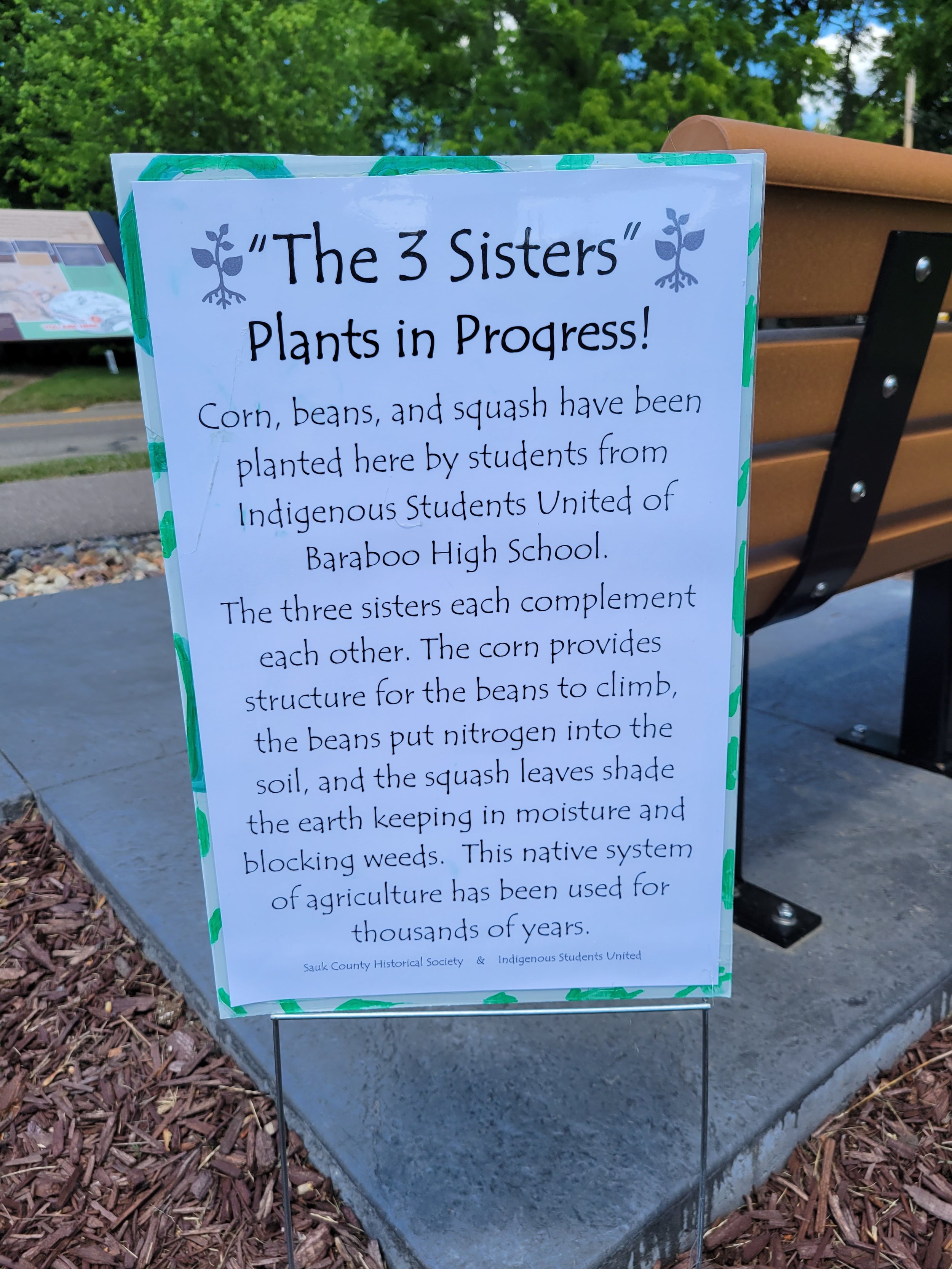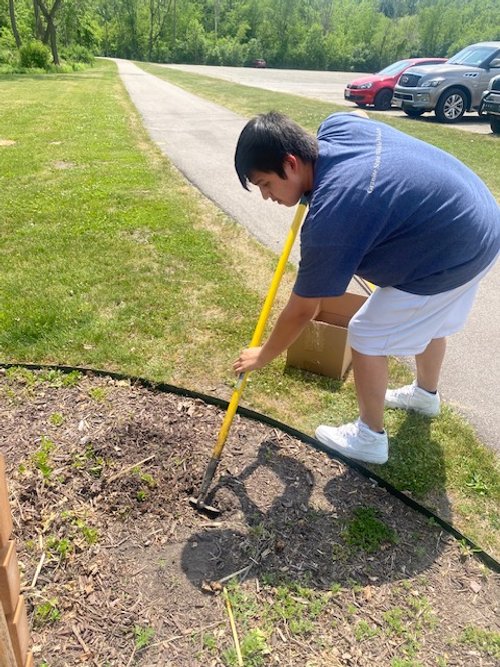The Three Sisters
Planting of crops where we now call Sauk County has been happening for hundreds of years, beginning with the Indigenous Peoples and the planting of the Three Sisters. Today, SCHS and the Ho-Chunk Nation honor that tradition.
Corns, beans, and squash, the three sisters, were recently planted near the site of a former Ho-Chunk village along the Baraboo River by members of Baraboo High School’s Indigenous Students United (ISU) and their advisor. Students, Lily Reyes and Dedrich Cloud were assisted by Angelica Greendeer who teaches the Ho-Chunk language at the Baraboo High School and who is the ISU advisor and SCHS executive director, Paul Wolter.
The planting was done at the site of two interpretive panels on the Baraboo Riverwalk that tell about the mounds, Ho-Chunk village, and cornfields that once existed nearby. The three sisters work together for optimal growth. The corn provides structure for the beans to climb. The beans put nitrogen into the soil and the squash plants provide broad leaves that shade the earth making it less likely to dry out and making it harder for weeds to grow.
Sauk County, the Ho Chunk Nation, and SCHS Collaborate
to Design Lasting Master Property Plans
The Yellow Thunder Memorial - Wakąjazi Mąągex and Man Mound Man Mound National Historic Landmark Master Property Plans are the result of cooperation by Sauk County, Ho-Chunk Nation and the Sauk County Historical Society to codify best stewardship practices for both Sacred Sites and for their surroundings, define the roles of the parties involved, and create future goals. The Sauk County Historical Society wishes to thank the staff from the Sauk County Land, Resources and Environment Department for leading the process and creating the final plan. This collaborative effort will guide future endeavors at the memorial for years to come.
Click the button below a plan to read the entire document.
Sacred Sites
The Sauk County Historical Society has stewardship over three highly important Native American sites in Sauk County. We continue to work to safeguard these sites through ongoing preservation and restoration projects. The Society does not allow use of metal detectors on these three SCHS-owned sites.
Man Mound National Historic Landmark
Man Mound National Historic Landmark, about four miles NE of Baraboo on Man Mound Road, was dedicated by the Sauk County Historical Society, the Wisconsin Archeological Society, and the Wis. Federation of Women's Clubs in 1908. The park encompasses a mound of earth in the form of a man, measuring 214 feet by 48 feet.
Yellow Thunder Memorial
If you've driven County Trunk A, you have undoubtedly seen a small monument off to the side of the road, surrounded by bushes. This stone memorial was erected by the Sauk County Historical Society and the Twentieth Century Club of Baraboo in 1909 to honor the Chief.
Hulburt Creek Garden Beds
At one time the garden beds, almost 200 acres of them, were home to a thriving Native American culture, with trails leading from the garden beds to places far into what today is Wisconsin. Corn, a companion plant of perhaps beans, and squash or pumpkins once flourished on these raised beds that long ago were constructed and managed by the toil of many.
Indigenous Peoples History in Art
Artist Ferdinand Pettrich lived in the United States from 1845 - 1856. During that time he created a series of 33 works in plaster representing the Shawnee Sioux, Sauk-Fox, Winnebago (Ho-Chunk), and Creek. According to the description found on the Vatican Museum website, Pettrich’s works of art depict the everyday life, hunting, war, and peace negotiations. The entire collection was given to Pope Pius IX in 1858. Photo courtesy Steven Vaillancourt








